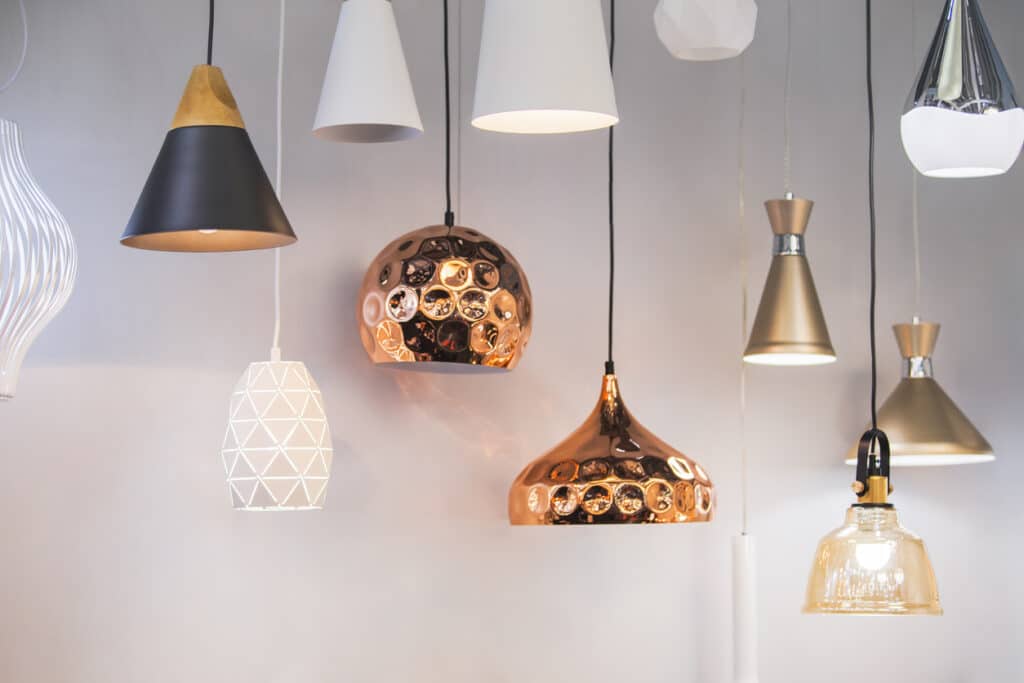In any home, layered light creates a flexible, adaptable space that all residents can enjoy. Whether reading books, crafting, or simply showcasing prized art, layered light offers the perfect level of illumination. In professional lighting design, layered lighting plans are built with ambient, task, and accent lighting. If you’re layering the lighting in your home, you need to know what each lighting type accomplishes.
Ambient Lighting
Sometimes referred to as general lighting, ambient lighting provides overall illumination. It is the base layer of lighting in every room.
In the most basic lighting plan, a simple overhead fixture provides all ambient lighting. When layering lights, you can incorporate lamps, chandeliers, pendant lights, and other lighting types to add variety and flexibility.
The primary goal of ambient lighting is to bring brightness to a space. Ambient lighting creates functional and easy-to-navigate environments.
Task Lighting
Task lighting is bright, focused lighting. It’s the desk lamp that shines down on your laptop or writing pad, the under-counter light that illuminates your chopping block or other kitchen activities, or the wall sconces used in bathrooms to make makeup application and other forms of focused self-care easier. Intentionally directed on the task at hand, task lighting reduces shadows, limits eyestrain, and offers a high level of adaptability.
Task lighting personalizes spaces by creating a level of functionality that’s best suited to residents, their lifestyles, and their needs. For those who work at home, the right task lighting can also greatly increase work quality and productivity.
Accent Lighting
Just as its name implies, accent lighting draws attention to specific focal points in rooms. You can use accent lighting to highlight a framed picture, a decorative mantle, or a prized trophy. You can also use it to draw eyes toward ornate architectural elements, such as a coffered or tiled ceiling.
Pendant lights, track lights, recessed lights, and spotlights are all common choices for accent lighting. However, if you have rows of framed portraits lining your halls, you can shed soft light on these pieces with wall sconces. When it comes to creating the look you want, wall sconces and other “soft” lighting options can prove surprisingly adaptable.
Which Lighting Types Do You Need?
Multi-layered lighting is a common element of universal home design. While ambient lighting is enough to illuminate any room, accent and task lighting make spaces more flexible, enjoyable, and livable. Combinations of these three lighting types also provide an adaptable ambiance so that residents can create the ideal mood for every occasion.
Some lighting choices are especially important for meeting special needs. For instance, if you have an aging adult in your home or another resident with mobility challenges, task lighting and enhanced ambient lighting could be essential for ensuring their comfort, safety, and self-sufficiency. When building your lighting plan, you’ll want a strategic and needs-specific mix.
If you need help choosing lighting for your house, the pros can help. For expert lighting design and installation in Waldorf, MD, get in touch with Circuit Doctors today.

